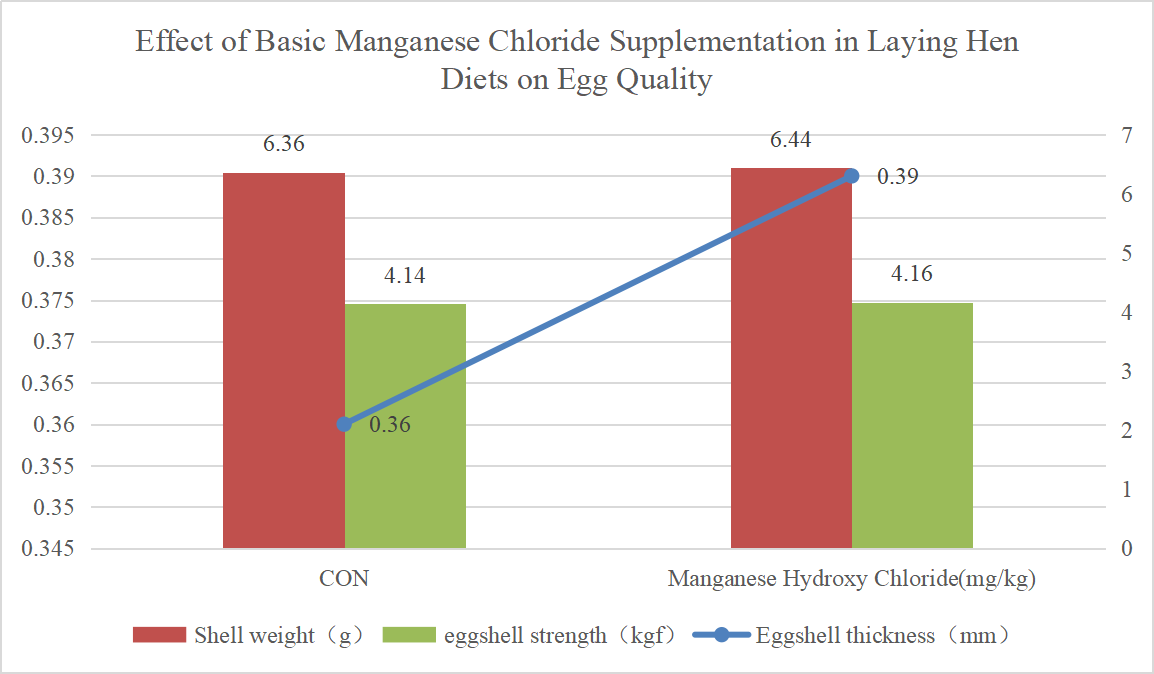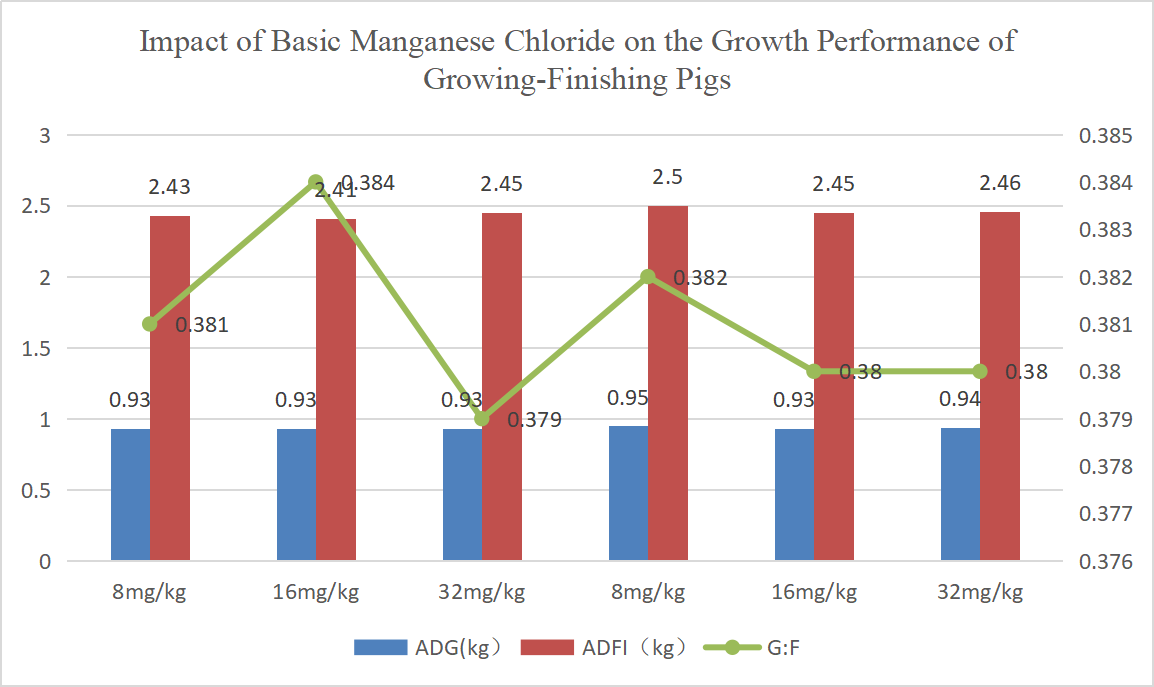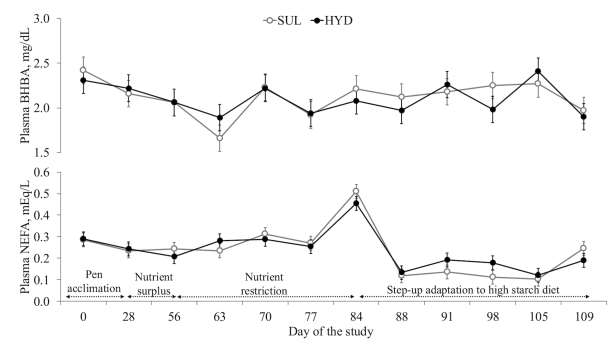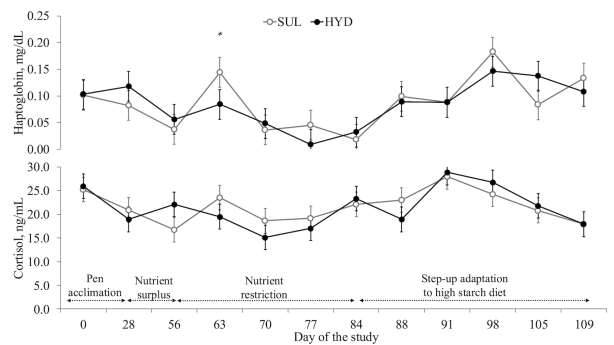Manganese is a component of arginase, prolidase, oxygen-containing superoxide dismutase, pyruvate carboxylase, and other enzymes, and also functions as an activator for numerous enzymes in the body. Manganese deficiency in animals leads to decreased feed intake, slowed growth, reduced feed conversion efficiency, skeletal abnormalities, and reproductive dysfunction. Traditional inorganic manganese sources such as manganese sulfate and manganese oxide exhibit low bioavailability.
SUSTAR® Basic Manganese Chloride (TBMC) is a high-purity, highly stable manganese-derived feed additive. Compared with traditional MnSO4, it has a higher effective content and lower risk of impurities, and is suitable for pigs, poultry, ruminants and aquatic animals.
Product Information
Chemical Name: Basic manganese chloride
English Name: Tribasic Manganese Chloride, Manganese chloride hydroxide, Manganese hydroxychloride
Molecular Formula: Mn2(OH)3Cl
Molecular Weight: 196.35
Appearance: Brown powder
Physicochemical Specifications
|
Item |
Indicator |
|
Mn2(OH)3Cl, % |
≥98.0 |
|
Mn2+, (%) |
≥45.0 |
|
Total arsenic(subject to As), mg/kg |
≤20.0 |
|
Pb (subject to Pb), mg/kg |
≤10.0 |
|
Cd (subject to Cd), mg/kg |
≤ 3.0 |
|
Hg (subject to Hg), mg/kg |
≤0.1 |
|
Water content, % |
≤0.5 |
|
Fineness (Passing rate W=250μm test sieve), % |
≥95.0 |
Product Features
1.High stability
As a hydroxychloride-containing substance, it is not easy to absorb moisture and clump, and is more stable in feeds with high temperatures, high humidity or containing vitamins and other active substances
2. High-efficiency manganese source with higher bioavailability
Basic manganese chloride has a stable structure and moderate release rate of manganese ions, which can reduce antagonistic interference
3. Environmentally friendly manganese source
Compared with inorganic manganese (e.g., manganese sulfate, manganese oxide), higher absorption rate in the intestine and low emission, which can reduce heavy metal pollution in soil and water.
Product efficacy
1. Participates in chondroitin synthesis and bone mineralization, helps prevent bone dysplasia, soft feet and lameness;
2. Manganese, as a core component of superoxide dismutase (Mn-SOD), helps scavenge free radicals and improve stress resistance
3. Improve the economic characteristics of poultry eggshell quality, broiler muscle antioxidant capacity and meat water retention
Product applications
1.Laying Hens
Adding Basic manganese chloride to the diet of laying hens can effectively improve laying performance, alter serum biochemical parameters, increase mineral deposition in eggs, and enhance egg quality.
2.Broilers
Manganese is a key trace element for broiler growth and development. Incorporation of Basic manganese chloride into broiler feed significantly enhances antioxidant capacity, bone quality, and manganese deposition, thereby improving meat quality.
|
Stage |
Item |
Mn as MnSO4 (mg/kg) |
Mn as Manganese Hydroxy chloride (mg/kg) |
|||||
|
100 |
0 |
20 |
40 |
60 |
80 |
100 |
||
|
Day 21 |
CAT(U/mL) |
67.21a |
48.37 b |
61.12 a |
64.13a |
64.33a |
64.12a |
64.52a |
|
MnSOD(U/mL) |
54.19a |
29.23 b |
34.79b |
39.87b |
40.29 b |
56.05 a |
57.44a |
|
|
MDA(nmol/mL) |
4.24 |
5.26 |
5.22 |
4.63 |
4.49 |
4.22 |
4.08 |
|
|
T-AOC (U/mL) |
11.04 |
10.75 |
10.60 |
11.03 |
10.67 |
10.72 |
10.69 |
|
|
Day 42 |
CAT(U/mL) |
66.65b |
52.89c |
66.08b |
66.98b |
67.29b |
78.28a |
75.89a |
|
MnSOD(U/mL) |
25.59 b |
24.14 c |
30.12 b |
32.93ab |
33.13ab |
36.88 a |
32.86ab |
|
|
MDA(nmol/mL) |
4.11 c |
5.75 a |
5.16 b |
4.67bc |
4.78 bc |
4.60 bc |
4.15 c |
|
|
T-AOC (U/mL) |
100 |
0 |
20 |
40 |
60 |
80 |
100 |
|
3.Pigs
Studies have demonstrated that during the finishing phase, providing manganese in the form of Basic manganese chloride leads to superior growth performance compared to manganese sulfate, with significant increases in body weight, average daily gain, and daily feed intake.
4.Ruminants
During adaptation of ruminants to high-starch diets, substituting copper, manganese, and zinc sulfates with their hydroxy forms—Basic copper, manganese, and zinc chlorides (Cu: 6.92 mg/kg; Mn: 62.3 mg/kg; Zn: 35.77 mg/kg)—can modulate beef cattle growth performance, plasma inflammation markers, and energy metabolism indices, thereby enhancing health under high-concentrate feeding conditions.
Applicable Species: Farm animals
Dosage and Administration:
1) The recommended inclusion rates per ton of complete feed are shown below (unit: g/t, calculated as Mn2⁺)
|
Piglets |
Growing & finishing pigs |
Pregnant (lactation) sows |
Layers |
Broilers |
Ruminant |
Aquatic animal |
|
10-70 |
15-65 |
30-120 |
660-150 |
50-150 |
15-100 |
10-80 |
2) The scheme for using basic manganese chloride in combination with other trace elements.
|
Mineral types |
Typical product |
Synergistic advantage |
|
Copper |
Basic copper chloride, copper glycine, copper peptides |
Copper and manganese work synergistically in the antioxidant system, helping to alleviate stress and enhance immunity. |
|
Ferrous |
Iron glycine and peptide chelated iron |
Promote the utilization of iron and the production of hemoglobin |
|
Zinc |
Zinc glycine chelate, Small peptide chelated zinc |
Participate jointly in bone development and cell proliferation, with complementary functions |
|
Cobalt |
Small peptide cobalt |
Synergistic regulation of the microecology in ruminants |
|
Selenium |
L-Selenomethionine |
Prevent stress-related cellular damage and delay aging |
l Regulatory compliance
| Region/Country | Regulatory status |
| EU | According to the EU regulation (EC) No 1831/2003, basic manganese chloride has been approved for use, with the code: 3b502, and is named Manganese(II) chloride, tribasic. |
| America | AAFCO has included manganese chloride in the GRAS (Generally Recognized as Safe) approval list, making it one of the safe elemental sources for use in animal feed. |
| South America | In the Brazilian MAPA feed registration system, it is permitted to register products of trace elements. |
| China | The “Feed Additive Catalog (2021)” includes as the fourth category of trace element type additives. |
Packaging: 25 kg per bag, inner and outer double-layer bags.
Storage: Keep sealed; store in a cool, ventilated, dry place; protect from moisture.
Shelf Life: 24 months.
Media Contact:
Elaine Xu
SUSTAR Group
Email: elaine@sustarfeed.com
Mobile/WhatsApp: +86 18880477902
Post time: Jul-29-2025








